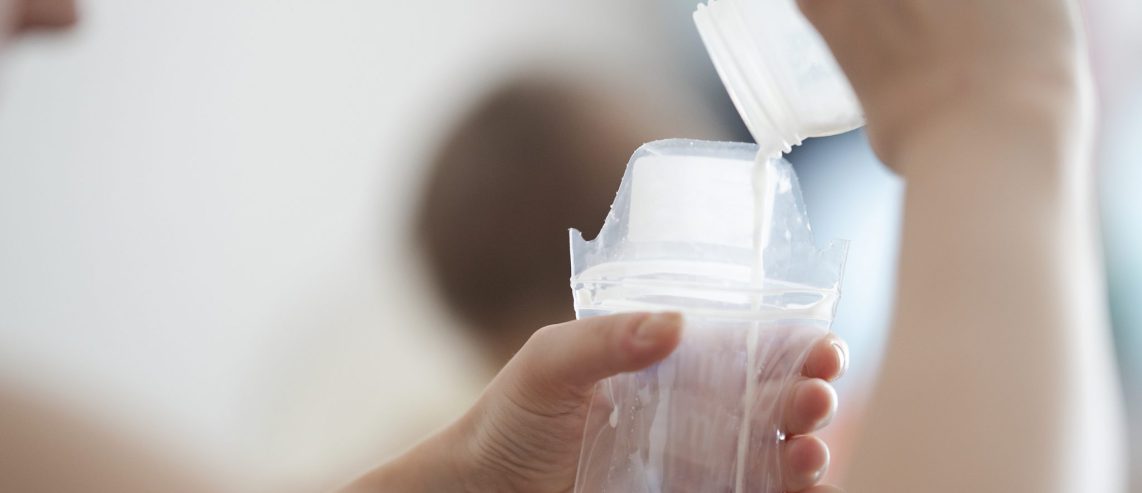When you are nearing the end of your pregnancy, the days and weeks up to your due date can drag. You may feel bloated, swollen, tired, stressed, and even in pain. Given your discomfort, it’s normal if you are eager to go into labor sooner rather than later.
You may even wonder what you can do to get labor started naturally. Some family and friends may suggest breast pumping to help spur labor. This involves using a breast pump to stimulate your nipples to produce colostrum.
The medical term for this is intrapartum nipple stimulation therapy.
So, is there any truth to the idea that breast pumping induces labor? And what are the risks of breast pumping during pregnancy? Here’s what you should know if you are thinking about breast pumping to induce labor.
Can Pumping Induce Labor?
Studies have shown that nipple stimulation can help induce labor in a hospital setting. It may shorten the time to delivery and reduce postpartum bleeding. However, researchers haven’t studied the effects of breast pump use at home to bring on labor.
Never try to induce labor alone or without talking to your doctor first. The hospital studies showed nipple stimulation may benefit women with low-risk pregnancies. Doctors still need to study whether breast pumping is safe to induce labor in women with high-risk pregnancies.
Nipple stimulation is included in the American College of Obstetricians and Gynecologists (ACOG) 2009 clinical management guidelines. They deemed it a “natural and inexpensive nonmedical method for inducing labor” for low-risk pregnancies.
One small randomized controlled trial suggested that nipple stimulation naturally induces labor. The American Journal of Obstetrics and Gynecology published the study.
Seventeen pregnant people in the trial got intrapartum nipple stimulation. Most got pitocin after (a standard induction method). The control group got pitocin alone.
People who got nipple stimulation delivered more than 4 hours sooner than those who received only pitocin. It took between 21 and 80 minutes of pumping for most of the women in the study to start “adequate” labor contractions. That’s at least 3 contractions in 10 minutes, enough to get labor started.
Researchers did the studies in medical settings under strict supervision, not at home. Though these studies suggest it may be effective, nipple stimulation isn’t typically used by doctors in hospital settings.
Talk to your doctor if you’re interested in breast pumping as a natural method for inducing labor at home. Studies haven’t shown whether breast pumping at home is safe and effective at inducing labor.
Never Miss a Beat!
Subscribe to Our HealthBeat Newsletter!
Thank you for subscribing!
You can now select the specific newsletters you'd like to receive.
You are already subscribed.
Subscribe to more newsletters in our email preference center.
Sorry, an error occurred. Please try again later.
Get Healthy Tips Sent to Your Phone!
When to Talk to Your Doctor
Talk to your doctor if you want to bring labor on at home. If you’re considering using a breast pump to induce labor, ask your doctor for their advice first. They can review whether it’s safe for you to induce labor and the risks.
If you’re heavily pregnant and uncomfortable, discuss elective labor induction with your doctor. If you are healthy, your doctor may give the okay for you to breast pump to induce labor. They will explain how and when you should breast pump to induce labor.
Induction at 39 weeks and after does not seem to affect a baby’s health. That’s according to the U.S. Department of Health and Human Services.
The dangers of using a breast pump to induce labor appear the same as the general risks of inducing labor. These include:
- Having labor come on too quickly, so you don’t make it to the hospital.
- Causing an infection in the baby.
- Developing an infection of the amniotic fluid, placenta, or membranes (chorioamnionitis).
- Overstimulating the uterus and causing it to contract too often. This happens with pitocin, usually given for induction. Too many contractions can cause problems with the fetal heart rate.
- Rupturing the uterus, though this is rare.
Medical Reasons Why Doctors Induce Labor
For some women, inducing labor is part of their plan for a healthy pregnancy and birth.
There are several medical reasons why your doctor may want to induce labor. These include if:
- Your pregnancy has lasted more than 41 weeks.
- Your water has broken, but labor has not started. This is the pre-labor rupture of membranes (PROM).
- You don’t have enough amniotic fluid around the fetus.
- You have problems with your placenta.
- You have or are at risk of eclampsia, preeclampsia, and high blood pressure.
- You have a chronic health condition, such as diabetes, kidney disease, or heart disease.
- You have gestational diabetes.
- You have an infection inside your uterus.
- Your fetus is growing too slowly for their gestational age.
- Your Rh factor, a protein found on red blood cells, is negative, and your unborn baby’s is positive. As a result, your body creates antibodies that can cross the placenta and attack the fetus’s blood cells. Left untreated, this can cause serious health problems, even death, for a fetus or newborn.
- You are at risk of postpartum depression.
Is It Okay to Induce Labor for Nonmedical Reasons?
Inducing labor without a medical reason is elective labor induction. Wanting to meet your baby as soon as possible is not a valid medical reason to induce labor.
In recent years, elective labor induction has become more common. Reasons women may ask their ob-gyn or doctor to induce labor include:
- Easing physical discomfort.
- Managing scheduling conflicts with their ob-gyn.
- To get to the hospital if they live far away.
To reduce the chance of c-section delivery, an ob-gyn can consider elective labor induction at 39 weeks for a healthy pregnancy.
How Do Doctors Induce Labor?
How an ob-gyn induces labor depends on your pregnancy, if your cervix has started dilating, and your medical history. They’ll typically use one or more of the following:
- Medications called prostaglandins. Taken by mouth or inserted into the vagina, prostaglandins help soften the cervix to dilate or stretch for labor. This process is “ripening the cervix.”
- Devices to ripen the cervix. This includes laminaria — thin, expandable rods inserted into the cervix to help it dilate. Your doctor may also use a small tube with a balloon to expand your cervix.
- Sweeping or stripping the membranes. This is when your ob-gyn sweeps a gloved finger between your amniotic sac and uterine wall. This helps separate the fetal membranes from your cervix.
- Pitocin, the synthetic version of the labor hormone oxytocin. Delivered through a tube in your arm, pitocin starts causing contractions 30 minutes after it’s given. It’s gradually ramped up over several hours.
- Rupturing your amniotic sac (amniotomy). Doctors can puncture the sac with a special device if your water doesn’t break on its own. Most women go into labor within a few hours after an amniotomy.
Sources
ACOG Clinical Practice Bulletin. 2009. Link.
Intrapartum Nipple Stimulation Therapy for Labor Induction: A Randomized Controlled External Pilot Study of Acceptability and Feasibility. American Journal of Obstetrics & Gynecology. January 15, 2022. Link.
Labor and Birth. Office on Women's Health. U.S. Department of Health and Human Services. Link.
The Rh Factor: How It Can Affect Your Pregnancy. American College of Obstetricians and Gynecologists. Link.
Labor Induction: Frequently Asked Questions. American College of Obstetricians and Gynecologists. Link.
Induction of Labor at 39 Weeks. American College of Obstetricians and Gynecologists. Link.
About UPMC Magee-Womens
Built upon our flagship, UPMC Magee-Womens Hospital in Pittsburgh, and its century-plus history of providing high-quality medical care for people at all stages of life, UPMC Magee-Womens is nationally renowned for its outstanding care for women and their families.
Our Magee-Womens network – from women’s imaging centers and specialty care to outpatient and hospital-based services – provides care throughout Pennsylvania, so the help you need is always close to home. More than 25,000 babies are born at our network hospitals each year, with 10,000 of those babies born at UPMC Magee in Pittsburgh, home to one of the largest NICUs in the country. The Department of Health and Human Services recognizes Magee in Pittsburgh as a National Center of Excellence in Women’s Health; U.S. News & World Report ranks Magee nationally in gynecology. The Magee-Womens Research Institute was the first and is the largest research institute in the U.S. devoted exclusively to women’s health and reproductive biology, with locations in Pittsburgh and Erie.

